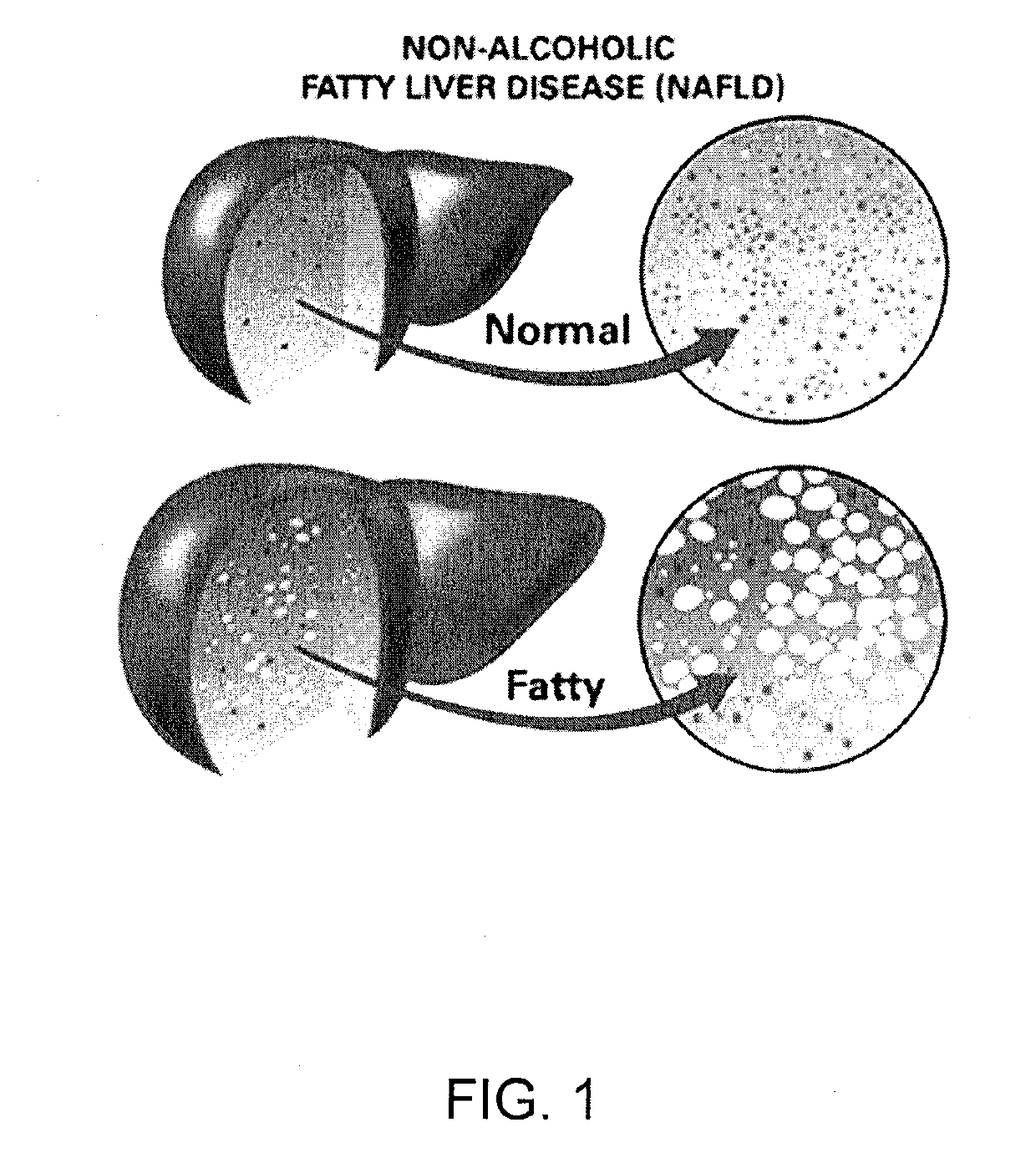Method and system for reducing the likelihood of developing liver cancer in an individual diagnosed with non-alcoholic fatty liver disease
a non-alcoholic fatty liver disease and individual diagnosis technology, applied in the direction of unknown materials, medical preparations, pharmaceutical delivery mechanisms, etc., can solve the problems of nafld being considered a major risk factor for hcc, affecting the pharmacodynamics of anticancer agents, and affecting so as to reduce the effect, prevent the progression of nash, and increase the level of oxldl antibody
- Summary
- Abstract
- Description
- Claims
- Application Information
AI Technical Summary
Benefits of technology
Problems solved by technology
Method used
Image
Examples
Embodiment Construction
[0044]Probiotic therapies can reduce liver aminotransferases, total-cholesterol, TNF-α and improve insulin resistance in NAFLD patients. Modulation of the gut microbiota represents a new treatment for NAFLD. In certain embodiments, the methods and systems as described herein are directed to inhibiting glucosphingolipid synthesis in an individual by provision of particular microbes effective to achieve such inhibition. In other embodiments, an engineered autonomously distributed circuit that contains a programmable nuclease able to target a virulence factor or an antibiotic resistance gene of the bacterial species is employed, whether they be Gram-negative bacterial cells, Gram-positive bacterial cells, or a combination thereof. Microbial cells may include members of the phyla Actinobacteria, Bacteroidetes, Proteobacteria, Firmicutes, or a combination thereof. In particular embodiments, gut bacteria are modified to address the synthesis of triacylglycerol. There is a direct correlati...
PUM
 Login to View More
Login to View More Abstract
Description
Claims
Application Information
 Login to View More
Login to View More - R&D
- Intellectual Property
- Life Sciences
- Materials
- Tech Scout
- Unparalleled Data Quality
- Higher Quality Content
- 60% Fewer Hallucinations
Browse by: Latest US Patents, China's latest patents, Technical Efficacy Thesaurus, Application Domain, Technology Topic, Popular Technical Reports.
© 2025 PatSnap. All rights reserved.Legal|Privacy policy|Modern Slavery Act Transparency Statement|Sitemap|About US| Contact US: help@patsnap.com

